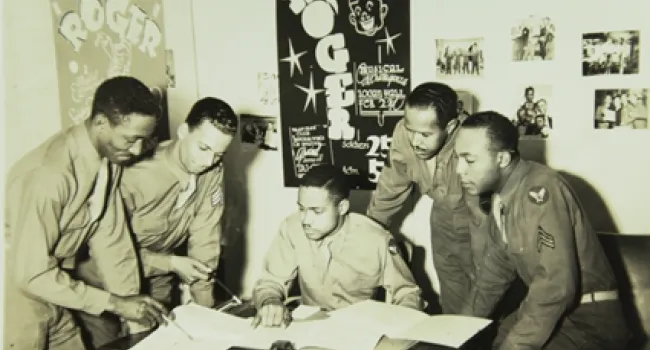The story of the Tuskegee Airman is even more a story about America than about a group of determined young African American men and women in the late 30’s and early 40’s. On this edition of CONNECTIONS you will discover more about this remarkable event.
Who are the Tuskegee Airmen?
Until the 1940s, African Americans were limited to certain roles in the military. They could not hold leadership roles and were denied skilled training in such areas as flying an aircraft. In 1941, an all African American flying squadron was established in Tuskegee, Alabama.
The purpose of this Army Air Corps program was to train African Americans to fly and maintain a combat aircraft. The people involved in this experiment acquired the name "Tuskegee Airmen." The members of this squadron were not all pilots, but some were navigators, bombardiers, maintenance and support staff, and instructors. Basically all the personnel involved in keeping the planes in the air were considered "Tuskegee Airmen."
Tuskegee Institute, founded by Booker T. Washington, was selected as the training ground for the pilots. The school had the facilities, technology and climate for training year-round with airplanes. By World War II, the Tuskegee program had expanded and become the center for African American aviation. The Tuskegee Airmen paved the way for full integration of African Americans into the U.S. military.
Standards
- Along with the rest of the world, the United States and South Carolina experienced economic instability during this period. As a result, political instability and worldwide conflict consumed the world in the 1940s. Following World War II, the United States emerged as a world leader through political policies and economic growth.
- 5.3 Demonstrate an understanding of the economic, political, and social effects of World War II, the Holocaust, and their aftermath (i.e., 1930–1950) on the United States and South Carolina.
- 5.3.CE Analyze the cause and effect of government-sponsored policies within the United States and Europe related to the status of different groups, to include the Holocaust.
- 5.3.CX Contextualize the technological and geographic influence on military strategies in the Pacific and European theaters of war of World War II.
- 8.5.CO Compare South Carolina and U.S. wartime contributions and demobilization after World War II.
- USHC.4.CC Examine the continuity and changes on the U.S. homefront surrounding World War I and World War II.









